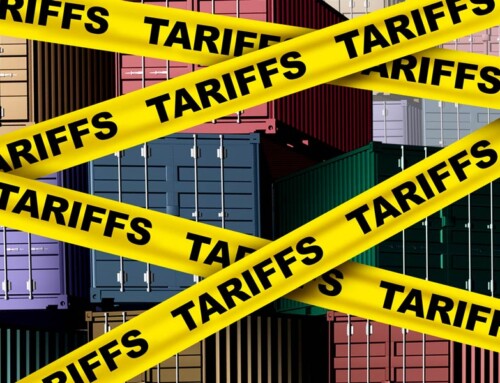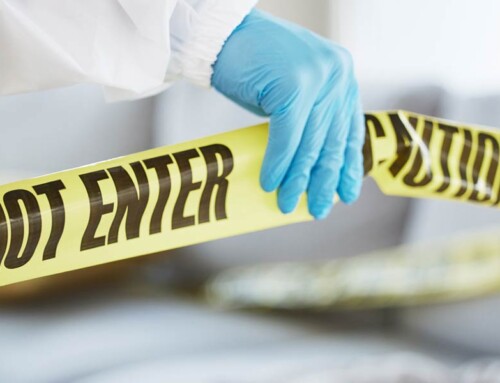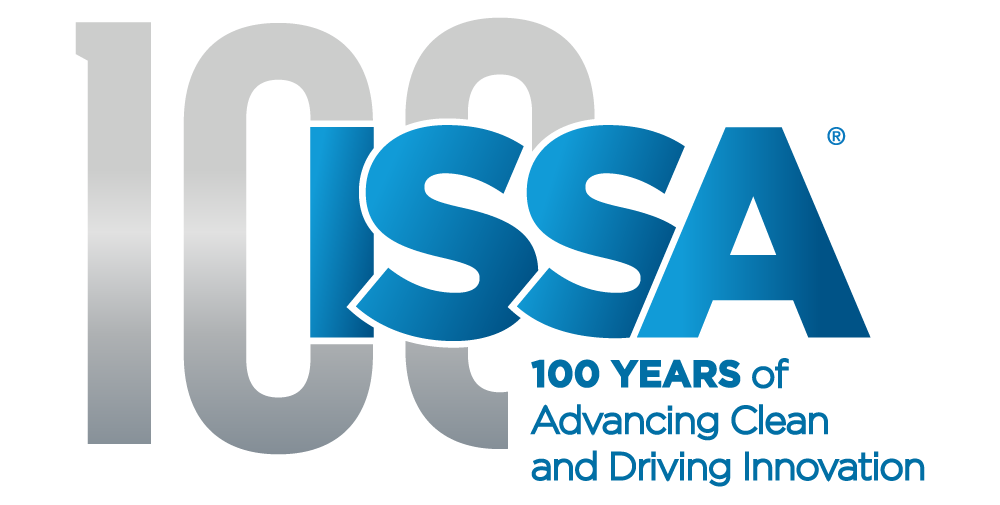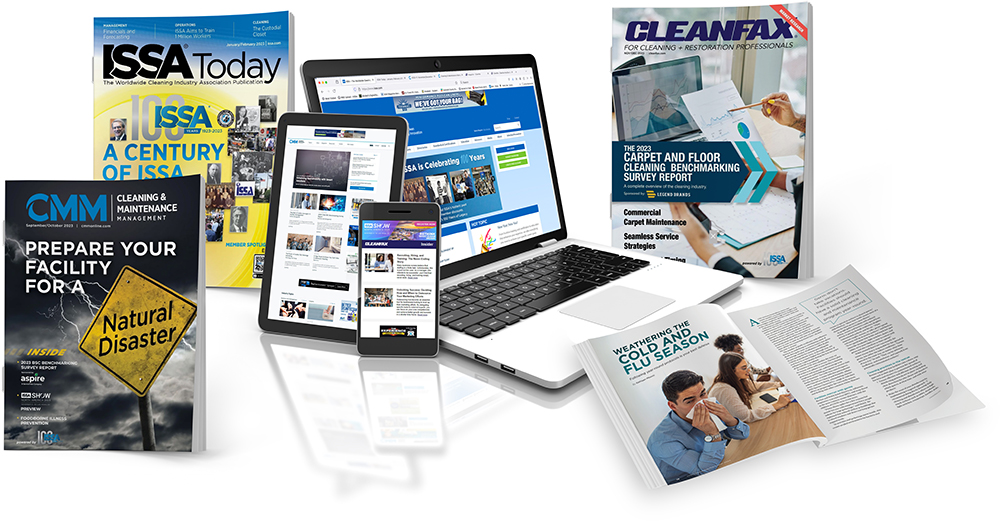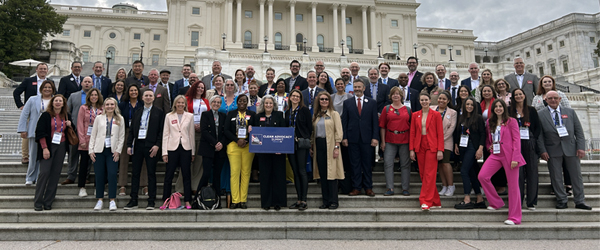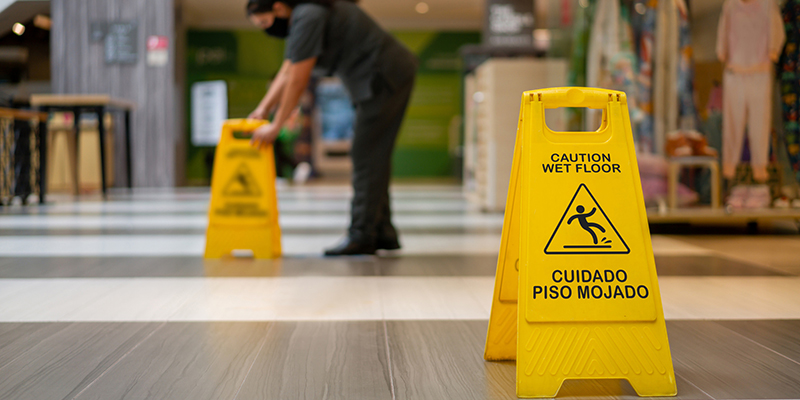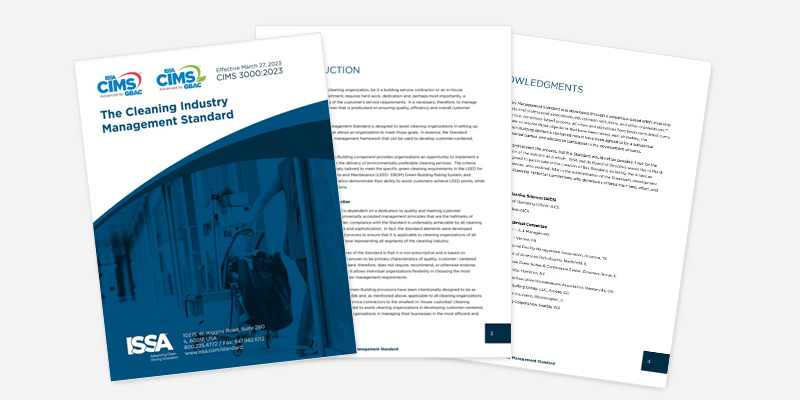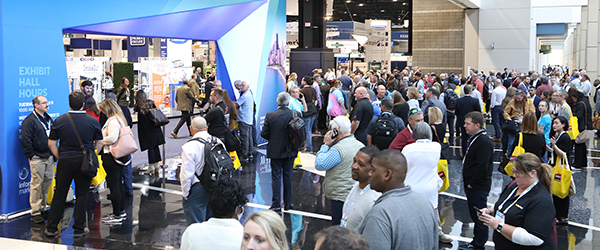Taking Green Cleaning to Schools
Environmental preferability, sustainability, “green,” reducing your environmental footprint … these terms have become part of our everyday lexicon as schools, businesses, households, and the public sector have increasingly focused on strategies and tactics designed to reduce their impact on the environment and human health.
State governments have been leaders in this area, adopting policies and implementing programs that are intended to improve their environmental profile and otherwise enhance their sustainability objectives.
On an increasing basis, state governments have identified green cleaning as a key tactic in achieving their sustainability objectives. As a result, there are now 22 states that have adopted a green cleaning procurement policy of one nature or another.
Historically, these state green cleaning laws and policies have focused on state agencies or state-owned buildings.
Over the last five years or so, however, states have focused on the implementation of green cleaning in K-12 schools on an increasing basis, primarily because of the vulnerable population—children—that these institutions house on a daily basis. There are now nine states plus the District of Columbia that require or encourage schools to adopt green cleaning programs, and that number will continue to grow.
These laws and policies on green cleaning in schools share certain commonalities. For example, they recognize the importance of high performance cleaning as necessary to maintain a sanitary and healthy indoor environment conducive to student performance. In fact, there is a growing body of evidence that makes the positive correlation between student academic performance and the state of “cleanliness” within the school facilities.
On the other hand, state policies on green cleaning also recognize that we can perform highly effective cleaning that removes harmful microorganisms, infectious agents, allergens, and other deleterious substances in an environmentally benign manner given the new products, technologies, and processes that are available today. Moreover, in today’s marketplace, schools are realizing they can transition to a comprehensive green cleaning program without adversely affecting their budgets. In many cases, schools, in fact, have experienced cost savings after switching over to environmentally preferable cleaning programs.
This said, these state school-focused policies still vary considerably. For example, most laws require schools to use green cleaning products, but differ in how they establish criteria for meeting this requirement.
The purpose of the remainder of this article is to provide a detailed summary of the various approaches taken by the states.
Connecticut
Connecticut requires each local and regional board of education to implement a green cleaning program for all school buildings and facilities no later than July 1, 2011. The state law defines a green cleaning program as the procurement and use of environmentally preferable cleaning products.
In turn, Connecticut defines environmentally preferable cleaning products as including, but not limited to, general purpose cleaners, bathroom cleaners, carpet cleaners, glass cleaners, floor finishes, floor strippers, hand cleaners, and soaps that meet the guidelines or environmental standards set by a national or international environmental certification program approved by the Connecticut Department of Administrative Services (DAS).
The law states that cleaning products should minimize to the extent possible the potential harm to human health and the environment and prohibits the use of cleaning products unless the product meets a third-party certification standard that has been approved by DAS. An existing department policy (a separate state law governing state-owned buildings) requires that only cleaning products that are labeled certified by Green Seal or Environmental Choice EcoLogo Program (EcoLogo) be used in state-owned buildings. DAS officials indicate that these two are also approved for use by schools.
District of Columbia
The District of Columbia (D.C.) Healthy Schools Act requires that all public schools in the D.C. area use environmentally friendly cleaning products. The law also establishes a D.C. environmental programs office responsible for a range of other activities to promote healthy schools, including establishing an integrated pest management program and promoting the U.S. Environmental Protection Agency (EPA)’s Tools for Schools program in public schools to reduce exposure to environmental factors that impact asthma in children and adults.
Under the law, D.C. public schools are permitted to continue using conventional cleaning products until their existing supplies are exhausted.
Hawaii
The Hawaii Green Cleaning for Schools law mandates the Hawaii Department of Education to require all public school facilities to “…give first preference, where feasible, to the purchase and use of environmentally sensitive cleaning and maintenance products that have been approved by the Green Seal program…”
The law limits the scope of cleaning products covered to bathroom/restroom, carpet, general purpose, glass, and hand cleaners; hand soaps; paper towels and other paper used for cleaning; and other categories as determined by the state department of health.
Meanwhile, the Hawaii statute specifically excludes products intended primarily to strip, polish, or wax floors; cleaners intended primarily to clean toilet bowls, dishes, laundry, upholstery, or wood; and toilet paper, facial tissue, or paper towels used for drying hands.
The state law charges the Hawaii Department of Health with the responsibility of maintaining a list of products that have been approved by Green Seal that public schools must use as a first-preference guideline when purchasing and using environmentally sensitive cleaning and maintenance products. The department of health is also required to “…review and evaluate existing research regarding environmentally-sensitive cleaning and maintenance products, including any research and guidance issued by the EPA.”
Illinois
The Illinois Green Cleaning Schools Act requires all public and nonpublic elementary and secondary schools with 50 or more students to “…establish a green cleaning policy and exclusively purchase and use environmentally sensitive cleaning products.”
Under the Act, the Illinois Green Government Coordinating Council (IGGCC) is charged with primary responsibility to “…establish and amend on an annual basis guidelines and specifications for environmentally sensitive cleaning products for use in school facilities.” The IGGCC completed the guidelines in February 2008, which are posted at: http://www.standingupforillinois.org/uploads/GreenCleanFinalGuidelines.pdf
The guidelines set forth a series of mandatory and recommended actions designed to give Illinois schools clear direction in purchasing and using green cleaning products as well as implementing a green cleaning program, as required by the act. The mandatory provisions became effective May 9, 2008.
Mandatory Provisions. The mandatory provisions cover the following product categories: bathroom, carpet, general purpose, hard floor surface cleaners; glass, window, and mirror cleaners; hand cleaners and hand soaps; and paper products.
Regarding the cleaning product formulations in these categories, schools may use products that are certified/recognized by Green Seal, EPA’s Design for the Environment (DfE), and EcoLogo.
For jansan paper products, schools are deemed in compliance with the Illinois law if they use products that comply with the U.S. EPA Comprehensive Procurement Guidelines for Commercial and Industrial Sanitary Tissue or those that are certified by Green Seal or EcoLogo. Conversely, companies may “self-certify” that their products meet or exceed the referenced eco-label program requirements.
Recommended Provisions. The Illinois guidelines also set forth recommended or voluntary green cleaning procurement guidance and cleaning practices, which may be implemented individually or as a collective policy at the schools discretion.
The recommendations address product categories, such as air fresheners, bathroom and facial tissues, chrome cleaners and polishes, degreasers, disinfectants and sanitizers, floor care products, graffiti removers, and plastic bags. The recommended section also addresses powered cleaning equipment and sets forth “best practices” for implementing a green cleaning program.
Iowa
Iowa law directs all public school districts to conduct an evaluation and assessment regarding implementation of an environmentally preferable cleaning policy. Following the assessment, by July 1, 2012, all public school districts are required to purchase only cleaning and maintenance products identified by the Iowa Department of Administrative Services (IDAS) as environmentally preferable or products that meet nationally recognized standards. Note, however, that the law allows public school districts to deplete existing cleaning supplies and implement the new purchasing policy in the following year.
IDAS is required to provide information on its Web site regarding environmentally preferable cleaning and maintenance products to be used by the public school districts. The department is also authorized to provide information regarding other nationally recognized standards for these products as well as information about green cleaning and third-party product certification programs, including links to organizations such as EcoLogo, Green Seal, DfE, and the Responsible Purchasing Network.
A school district may opt out of compliance with the green cleaning requirements upon the affirmative vote of a majority of the members of the board of directors of the school district. Districts that opt out must notify the state department of education.
Maine
Maine law requires the state to encourage schools to use environmentally preferable cleaners by compiling a list of cleaning products that have been certified as meeting “health-based criteria for safety and efficacy” by a third-party independent agency, such as Green Seal, and to distribute that list to every school administrative unit in the state.
The state is also required to compile a list of disinfectants that have been evaluated using criteria established by the Division of Purchases or other acceptable criteria for environmentally preferred janitorial products and registered by the Board of Pesticides Control.
A complete list of green cleaners and disinfectants by Maine compiled is posted at: www.maine.gov/education/const/chem/green_cleaning_prod_list.xls. The list includes cleaning products certified by Green Seal and EcoLogo as well as those products recognized by DfE.
In addition, the department must develop recommendations for cleaning procedures that will reduce the use of toxic chemicals and improve indoor air quality while meeting performance standards for cleanliness. Maine has aggregated these and other green cleaning resources online at: http://www.maine.gov/education/const/chem/overview_green.htm
It is important to note that the Maine law does not require school districts to use green cleaning products, but rather, to “promote the implementation of green cleaning programs in schools.” The law also requires the state to recognize school green cleaning programs by compiling and maintaining a list of school administrative units that have committed to using cleaning products and disinfectants that are included in lists developed by the state and to make this list available to the public.
Maryland
Maryland has required the state’s K-12 public schools to procure and use green cleaning products since October 9, 2009, and requires the county boards of education to purchase green cleaning products for use in K-12 public schools throughout the state. The law defines green cleaning products and supplies as those that have “positive environmental attributes,” such as biodegradability, low toxicity, low VOC content, reduced packaging, and low life-cycle energy use.
The law further requires the State’s boards of education to draft specifications that provide “clear and accurate descriptions of the functional characteristics or nature” of green cleaning products that will be bought and used by the schools. In drafting such specifications, the boards must allow for “multiple avenues” in qualifying cleaning products as environmentally preferable, including, at the very least, products recognized by DfE, EcoLogo, and Green Seal.
The law allows schools to use up existing cleaning products before transitioning to green cleaning products. In addition, schools may opt out of implementing a green cleaning program if it is not “economically feasible.” The law also specifically states that the green cleaning specifications to be issued by the boards of education shall not preclude the use of disinfectants or sanitizers.
Missouri
Missouri requires the Missouri State Department of Elementary and Secondary Education to establish green cleaning guidelines and specifications for schools.
The Missouri State Board of Education formally approved the State Green Cleaning Guidelines and Specifications for Schools on January 15, 2009. The guidelines are largely consistent with the green cleaning guidelines issued by Illinois. One major difference is that implementation of the Missouri green cleaning guidelines by schools is voluntary, although it is mandatory for the department to issue the green cleaning guidelines, (Illinois schools are mandated to adopt green cleaning programs).
Of particular interest, both Missouri and Illinois reference Green Seal, DfE, and EcoLogo in regard to defining environmentally preferable bathroom, carpet, general purpose, and glass cleaners and hand soaps.
A copy of the Missouri green cleaning guidelines is posted at www.issa.com/mogc.
Nevada
Nevada has taken a decidedly different approach in its green cleaning for schools law. Since July 1, 2010, Nevada law has required all public K-12 schools to use environmentally sensitive cleaning and maintenance products in the cleaning of all floor surfaces only.
However, the legislation does allow the board of trustees of a school district to use environmentally sensitive cleaning products on surfaces other than just flooring.
Under Nevada law, the department of education, in consultation with other stakeholders, including industry, are required to adopt regulations that set forth the “…standards for environmentally sensitive cleaning and maintenance products for use in the cleaning of all floor surfaces in the public schools.”
These regulations do not preclude the use of disinfectants and sanitizers when necessary and the department is required to provide each school district with a list of products that meet those environmental standards. The district may request permission to use a green cleaning product that is not on the state list if the product is more economically feasible and effective and complies with the general standards established by the state.
The law also allows schools to opt out of implementing a green cleaning program for floor surfaces if it would place an undue economic burden on the school.
As of January 2011, each school district must prepare and submit to the department of education a written report regarding implementation of the law, including an evaluation of the effectiveness of the products used and a description of any requests for waivers. The law requires the department to have submitted a written report to the state legislature summarizing the school district reports by February 2011.
New York
On August 23, 2005, New York State became the first state to require the use of environmentally sensitive cleaning products in all elementary and secondary schools in New York State. The law authorizes the New York State Office of General Services (OGS) to work with the state’s department of education and the departments of health and environmental conservation to develop guidance for schools on the procurement and use of green cleaning products. Such guidance shall be based on, but not limited to, guidance issued by the EPA and the Office of the Federal Environmental Executive.
The law applies to “elementary and secondary schools” defined as a facility used for instruction of elementary or secondary students by: any school district, including a special act school district and a city school district in a city having a population of 125,000 inhabitants or more; a board of cooperative educational services; a charter school; an approved private school for the education of students with disabilities; a state supported school for the deaf or blind; and any other private or parochial elementary or secondary school. The law became effective on Sept. 1, 2006.
OGS issued green cleaning guidelines for the procurement and use of green cleaning products by covered schools, which were revised in June 2010. Among other things, the guidelines address best cleaning management practices and also specify criteria to be used in the selection of green cleaning products.
In general, the guidelines apply only to general purpose, bathroom, toilet bowl, carpet, glass, window, and mirror cleaners; carpet spotters; hand soaps; floor finishes and strippers; and vacuum cleaners.
In reference to the above chemical cleaning products (except floor finishes and strippers), the products must be certified by Green Seal or EcoLogo. Vacuum cleaners must be certified by the Carpet and Rug Institute’s Seal of Approval program. In the alternative, companies may “self-certify” that their products meet or exceed the referenced eco-label program requirements.
In regard to floor finishes and strippers, the New York guidelines set forth specific performance requirements that must be met to be considered acceptable.
This article first appeared in the 2012 February issue of ISSA Today.

